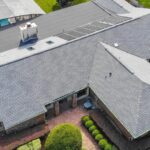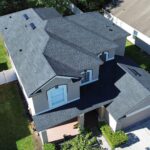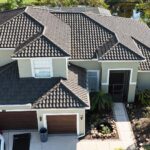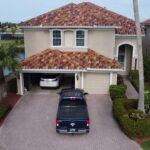Choosing the Perfect Roof Design
Choosing the perfect roof design for your home is a crucial decision that influences both its aesthetics and functionality. Understanding the different types of roof designs is the first step toward making an informed choice. Factors such as climate, architectural style, and budget play significant roles in this decision-making process. Moreover, the materials you select for your roof contribute to its durability and overall performance.
Collaborating with a professional roofing contractor can streamline the process, ensuring that your chosen design meets your expectations while adhering to industry standards and local building codes. In this guide, we’ll delve into each of these aspects to help you navigate the complexities of selecting the ideal roof design for your home.
Understanding the Different Types of Roof Designs
When it comes to choosing the perfect roof design for your home, it’s essential to understand the different types of roof designs available. This knowledge will not only help you make an informed decision but also enhance the aesthetic appeal and functionality of your home.
Gable Roofs
First, let’s discuss Gable Roofs. These are some of the most popular roof designs, characterized by their triangular shape. Gable roofs are relatively simple to design and build, offering excellent ventilation and more space for the attic. However, they can be problematic in high wind and hurricane areas.
Hip Roofs
Next on the list are Hip Roofs. These roofs have slopes on all four sides, with the sides being of equal length and meeting at the top to form a ridge. Hip roofs are more stable than gable roofs due to their inward slope on all four sides. However, they have less attic space and are more expensive to build.
Mansard Roofs
Mansard Roofs, or French roofs, have four sides with a double slope on each side. The lower slope is steeper than the upper one. Mansard roofs offer extra living space but can be more expensive to construct and maintain.
Flat Roofs
Flat Roofs are just as the name suggests – flat. They are the simplest roof design in terms of construction and cost. However, they require more maintenance to prevent leaks and are best suited for dry climates.
Shed Roofs
Shed Roofs consist of a single sloping roof surface, ideal for smaller structures like garages and extensions. They are easy to construct but offer little aesthetic appeal.
Dome Roofs
Dome Roofs are rarely used in residential settings, mostly seen in unique architectural structures. These roofs are beautiful and durable but can be costly and challenging to construct.
Gambrel Roofs
Gambrel Roofs are similar to Mansard roofs but with two sides instead of four. These roofs are often seen on barn-style homes and offer a large attic space. However, they’re not ideal for areas with heavy wind or snow.
By understanding the advantages and disadvantages of each type, you can choose the perfect roof design for your home.
Factors to Consider When Choosing a Roof Design
The Climate and Weather Conditions in Your Area
When choosing the perfect roof design for your home, there are several factors to consider. First and foremost, it’s important to factor in the climate and weather conditions in your area. For instance, Gable and Hip Roofs are excellent for areas with high winds and heavy snowfall due to their steep slopes, while Flat Roofs are more suitable for drier climates. Durability and maintenance are also crucial in choosing a roof design. A mansard roof, with its unique four-sided design, is known for its durability but may require more maintenance. On the other hand, Shed Roofs are simple in design and, thus easier to maintain. Assessing the long-term upkeep and lifespan of your prospective roof design can save you from unexpected costs and inconveniences down the line.
Consider Your Budget
Next, consider your budget. Dome Roofs can be more expensive due to their complex construction, while Gambrel Roofs, known for their distinct two-sided, two-slope design, can be more cost-effective. It’s essential to balance the initial cost of the roof with its durability and maintenance needs for a more accurate long-term budget.
The Style and Architecture of Your Home
The style and architecture of your home are also key considerations. Your roof should complement the overall aesthetic of your house. For instance, a Mansard Roof can lend a touch of elegance to a home, while a Dome Roof might suit a more modern architectural style. Of course, personal preference and aesthetics play a significant role. If you prefer a traditional look, a Gable or Hip Roof might be the best choice. Conversely, if you appreciate uniqueness and want your home to stand out, a Dome or Gambrel Roof may be more fitting.
Consider Local Building Codes and Restrictions
Lastly, don’t forget to consider local building codes and restrictions. Some areas may have specific regulations regarding roof design, materials, or height. Ensuring your chosen roof design complies with these rules will save you from potential legal issues and costly alterations later on.
Materials to Consider for Your Roof
Moving on to the materials you might consider for your roof, it’s important to remember that what works for one homeowner might not work for another. Each material has its own set of pros and cons which should be weighed carefully.
Asphalt Shingles
Firstly, asphalt shingles are one of the most common materials used in the United States. They’re affordable, easy to install, and come in a variety of colors. However, they might not be the most durable option, especially in regions with extreme weather conditions.
Wood Shingles
Wood shingles or shakes offer a natural and rustic look which can be very appealing. They are quite durable but require more maintenance compared to other materials. If not maintained properly, they can rot or split. Also, they might not be permitted in areas prone to fires due to their combustibility.
Metal Roofing
Metal roofing is growing in popularity. It’s durable, fire-resistant, and can be very energy efficient, reflecting heat instead of absorbing it. However, it can be more expensive than asphalt or wood, and it can be noisier during rainstorms.
Slate Roofing
Slate roofing is a high-end material that’s both beautiful and durable. It’s resistant to fire and weather damage and could last for more than 100 years, but it’s quite heavy and expensive, requiring professionals for installation.
Tile Roofing
Tile roofing, whether clay or concrete, gives your home a unique aesthetic and is incredibly durable. But similar to slate, it’s heavy and may require additional support structures. It can also be more expensive than other materials.
Rubber, Foam, or Plastic Roofing
Finally, rubber, foam, or plastic roofing materials are also options. They are lightweight, energy efficient, and can mimic other materials. However, they can be more susceptible to punctures and may not have the same lifespan as more traditional materials. Remember that each material has pros and cons, and the best choice depends on your personal preferences, budget, local building codes, and the climate where your home is located.
How to Work with a Professional Roofing Contractor
After selecting the right roofing material, the next important step is choosing a reputable roofing contractor. A seasoned professional will execute the job flawlessly and provide valuable insights on the best roofing design for your home. This choice shouldn’t be made lightly – consider the contractor’s experience, references, and past work. Check online reviews, ask friends and family for recommendations, and verify any potential contractor’s licensing and insurance.
Understanding Bids and Estimates
Understanding bids and estimates is also crucial. A bid is the fixed price the contractor offers for the entire project, while an estimate is an educated guess of what the project might cost, subject to change as the project progresses. Be wary of contractors who offer very low bids as this may be a sign of subpar materials or workmanship. It’s also essential to ask your potential contractor the right questions. Inquire about their experience in the industry, the timeframe of the project, and how they handle unexpected complications. Ask for a detailed description of the work to be done and materials to be used. Don’t forget to ask about warranties and guarantees too.
The Importance of a Contract
The importance of a contract cannot be overstated. This legal document outlines the terms and conditions of the project, including the scope of work, pricing details, payment schedules, and timelines. An agreement can protect you from unexpected charges, timeline changes, and disputes.
Know What to Expect During the Roofing Process
Lastly, know what to expect during the roofing process. It typically involves several steps, from removing the old roof, repairing the underlying structure, and installing new roofing material, to cleaning up the site. Keep in mind, that the process may be noisy and messy, but a professional contractor will strive to minimize inconvenience.
Conclusion
In conclusion, the process of choosing the perfect roof design for your home is not a task to be taken lightly. It is a crucial step in the overall design of your home, requiring careful consideration of various factors such as the architectural design of your home, the climate of your area, your style, and your budget. The main points we’ve covered in this article all contribute to making this choice an informed and well-thought-out one.
Recapping our journey, we started by emphasizing the importance of understanding your home’s architectural style. This is because the roof complements the overall aesthetic of your home, and choosing a roof design that matches your home’s architectural style brings about a harmonious blend. We then moved on to discuss the significance of considering your area’s climate.
Your roof should be capable of withstanding the weather conditions in your locale, ensuring the safety and longevity of your home. We also highlighted the importance of reflecting your style in your roof design, and not forgetting to keep your budget in mind. We discussed the relevance of partnering with a reliable roofing contractor and the necessity of understanding bids and estimates, asking the right questions, and having a solid contract.
Choosing the right roof for your home is more than just a design decision. It’s an investment in the safety, value, and aesthetic appeal of your home. Making the right choice can lead to years of comfort and satisfaction, and we hope that the points we’ve covered in this article have provided you with the knowledge and confidence to make this important decision. For expert guidance in selecting the perfect roof design and addressing any other roofing requirements, consider reaching out to 3MG Roofing & Solar. Their expertise and services can help you make informed decisions and achieve the ideal roofing solution for your home.
Name, Address, and Phone
3MG Roofing & Solar
1127 Solana Ave, Winter Park, FL, 32789, US
(833) 681-1460
Social Media’s
https://www.facebook.com/3mgroofing
https://twitter.com/3MGRoofingSolar
https://www.instagram.com/3mgroofing/
https://www.youtube.com/channel/UC7MpxXryoxNoT_9OAYBu2IA














